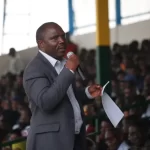On Wednesday, the International Capital Market Association (ICMA), who set the rules in the bond market, laid out plans for countries hit by climate induced natural disasters, such as flooding and hurricanes, to automatically freeze debt payments.
The ICMA introduced new ‘climate resilient debt clauses’ or CDRCs, specifically targeting low-income countries, that governments can plug into sovereign bonds they sell to raise money on global capital markets.
With many African countries on the brink or knee-deep in a debt crisis, the mechanism will allow them to pause debt payments for a maximum of 2 years to free up cash flow to provide aid and assistance to battle climate disasters.
Speaking during COP27, President & CEO at Africa Finance Corporation, Samaila Zubaru noted that adaptation must be a priority for the continent but it puts additional pressure on Africa’s current infrastructure needs.
“In Africa we have a lot of need. The infrastructure deficit is about US$2.3 trillion. If you factor in the need to climate-proof and build resilient infrastructure, it becomes about US$3 trillion.”
Also on Wednesday, a group of over 85 African insurers unveiled the African Climate Risk Facility (ACRF) to help climate-proof the continent’s most vulnerable communities.
The commitment will provide protection for 1.4bn people against floods droughts and tropical cyclones by providing US$14bn in climate risk insurance to 2030 to African sovereigns, cities, aid agencies and NGOs.
Both measures will go a long way in bridging the gaping climate risk financing gap on the continent as rich nations continue to shrug off demands for compensation for countries due to ‘loss or damage’ caused by global warming.
At the same time, if African borrowers can use the newly introduced CDRCs to avoid sovereign defaults while they’re grappling with the fallout from their latest climate disaster, this will benefit not only affected populations but their global creditors too.








